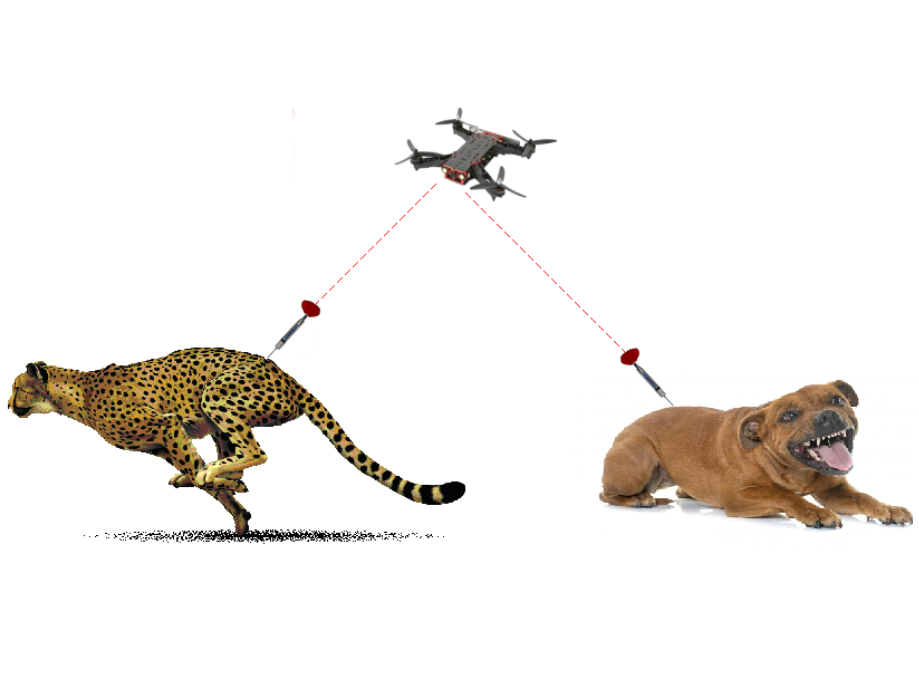Innovation of a Composite Drone for Vaccinating Dangerous Animals (CDVDA)
Operations currently performed by veterinarians to vaccinate animals require restraining the animal and using injection via a hypodermic syringe and needle. These two conditions can be easily fulfilled for domestic animals; however they become difficult to achieve in the field for unapproachable wild animals. Furthermore, the veterinary practitioner may also be confronted with the capture of an aggressive animal (i.e. stray dog, tiger escaped from the zoo, etc.) threatening the safety of local residents on the public domain. For this purpose, the speediest and least stressful solution for capturing smoothly these animals can be performed by teleanesthesia: a method applied to remotely neutralise a dangerous animal using a self-injectable syringe that contains a tranquilliser or anaesthetic. Due to the complexity of these operations when there are no other possibilities for restraining the animal in question, we have developed an innovative and cost-effective solution facilitating the process of vaccination and/or capture using the latest autonomous aircraft technology, that is to say an ultra-light drone capable of performing technical functions without physical intervention of the veterinary doctor. The above figure shows the technical device used for this purpose. With this idea as an objective and by using state-of-the-art technology of the quadrocopter drone with four rotors, the project CDVDA consists in the study and innovation of a technical object capable of responding to the needs of professional veterinarians by offering them the most effective solution. To this end, the quadrocopter drone will be realised by the assembly of several elements, namely the chassis structure, the propellers, the engines, the battery and the electronic card; it will then be equipped with a mini camera video and a removable hypodermic projector. The main research work is devoted to the study and design of the structural elements (i.e. the chassis, the platform and the propellers), where the desired materials for the design of these elements must have excellent mechanical and physico-chemical properties. To achieve these goals of excellence, we have chosen a hybrid composite material based on long carbon fibres coupled with carbon nanotube fibres embedded into a thermoplastic resin matrix.



